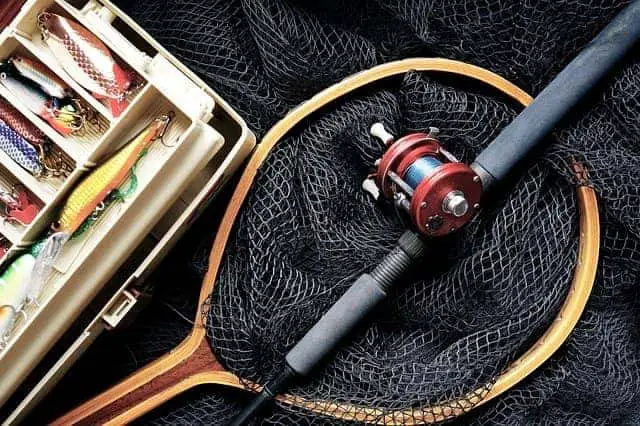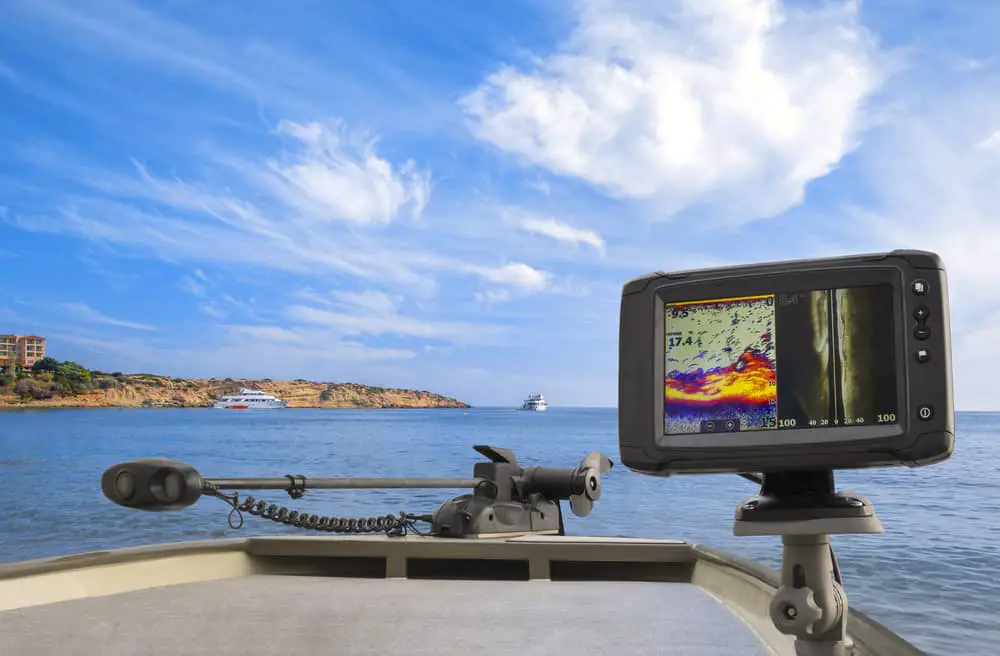Catfish are a very common fish species, across many countries and continents. They are feisty, willing to bite and taste excellent as the main dish. North America is the home of over 30 catfish species. The Big Three species include blue catfish, flathead catfish, and channel catfish. Fishing for them is a lot of fun since they put up quite a fight, especially trophy size ones. They are also different from other fish species, so there are a few things you should know before you decide to hit the water. In our Beginners guide to catfishing, we’ll answer the key questions every catfisherman should know.
Where to Find Catfish

Catfish can be found in both saltwater and freshwater bodies. The largest number of catfish are inhabiting freshwater lakes, ponds, streams, and rivers. The best places to find catfish are in various enclosures such as edges of the river curves, holes, wing dikes, tributaries, close to bridges and dams, under tree logs and rocks, etc.
When to Go for Catfishing

Catfish can be caught during any time of day and night. From late spring to early fall catfish become more active and feed extensively. At that time it’s best to hit the shallow waters during the night. During the day they stay in deeper waters and shelters, which is where you’ll have a better chance for a catch. During colder months catfish usually feed on early mornings to sunsets which is the best time to fish. At night they try to keep warm in deeper waters, holes, and cavities.
Choosing Right Gear for Catfishing

Since catfish like to fight and have plenty of power, you’ll need heavy-duty equipment to catch larger specimens. When it comes to smaller or regular size catfish, you won’t need to empty your pocket for some complicated fishing gear. Here’s an example of what you’ll need to catch your first catfish.
Rods

When it comes to catfish rods, you should go for a 7 foot, with medium to medium-heavy power. A cheaper fiberglass rod will be sufficient, with medium to fast action. For some bigger catfish, you should go for at least 8 foot, composite heavy rod. If you already have an old bass rod, you don’t need to spend additional money, at least when it comes to smaller size catfish. If you want to know more about top catfish rods in the market, you may have a look on our well researched content on the it. Hope you will find your desired rods.
Reels

If you plan on catching channel catfish, which don’t fight as hard as blues, or flatheads, almost any reel you already own will serve you well. A size 20 or 30 spinning reel is a good and cheap option for this type of catfish. If you plan on trophy fishing, go for a baitcasting reel, no smaller than size 50.
See also : What are the best Reels for Catfishing ?
Line
The type and strength of the line you’ll need depends on the size of fish you’re after. For regular size cats, a 14lb or stronger mono line will be enough. For monster catfish, you want to go with a 50 to 80lb mono or braided line. The stronger the line, the less of it will be possible to fit on your spool, so keep that in mind.
Hook
The type of hook you’ll need will also depend on the catfish size and type. Hooks come in different sizes, materials, and designs. Treble hooks are most commonly used for catching channel catfish. Pick one from size 2# to 6#, since they offer the most versatility.
For flathead and blue catfish, we recommend picking up a circle or Kahle type hook, since it proved to work the best. For larger fish go with a size 7 at least, and with 3 to 5 for some standard size flatheads and blues.
Stainless steel is the best material for any hook type since catfish have a very tough inside of the mouth.
looking for perfect hook for your next catfishing journey, check out our content “the best hooks for catfish“
Fish Finder

Fishfinder is a really useful piece of equipment when catfishing. They show a lot of valuable information, besides the presence of fish. Water depth and the layout of underwater terrain is something you can use to find the catfish “sweet spots”. Using a fish finder will improve your catfishing experience. However, this doesn’t mean you can’t catch catfish without the fish finder, you absolutely can. Many beginners start with bank fishing, so you don’t really have to worry about fish finders just yet. If you plan on going after bigger cats from a boat, a fish finder is something you should buy, if it fits your budget.
Boat/Kayak

Catfishing from a boat or a kayak can be a thrilling experience. Having the ability to set o the water and hit the depths you couldn’t have from a bank, can also bring in a substantial catch.
So, do you need a boat to catch a big catfish or a large number of them? The answer is no. There are numerous ways to land a good catch without a boat. But having a boat gives you more opportunities to catch a catfish as well as to have fun. If you’re interested in buying a catfish boat, check our article about Best Catfish boats, to choose the right boat for you.
Rigging
Rigs are an important part of your catfishing setup. Their main function is to place and keep the right bait at the right spot until the catfish bites it. There is a practically endless number of catfish rigs and their variations, but this shouldn’t scare you. Even a simple rig can be effective and bring in a good catch. There are many good catfishing rigs, but we recommend you start with a rig such as Carolina, Three-way, Slip Sinker, or Santee rig. To find out more about these and more types of rigs be sure to check our article Best Catfish Rigs.
Rigging tips
- Don’t overcomplicate your rig
Putting too many pieces of gear will increase the chance of your rig tangling up. There are plenty of simple rigs such as the Slip sinker rig is very effective and easy to set up.
- Adjust your rig to the type of bait
You want your bait to stay on the hook as long as possible, so make sure your hook supports the type of bait you’re using. For big cut baits use double circle hooks.
- Don’t be afraid to modify your rig
Try out different types of rigs, and even modify them yourself. Don’t get stuck on one rig if you see minimal results.
Tips and techniques for beginners
There are several catfishing techniques you can try out. Here’s a brief description and tips for each of the techniques.
- Catfishing with a tight line
This is the most basic catfishing technique. You simply cast the bait in a place you see fit, keep the fishing line tight, and wait for the bite. Use this technique to lure the catfish closer to the surface or the shore, rather than hitting the bottom with your bait.
- Drifting
This is also one very simple catfishing technique if you have the opportunity to fish from a boat. Cast the bait from the side of the boat, and watch for the bite, as the boat drifts with the wind. This technique covers a lot of areas, so you basically can’t go home empty-handed.
- Doodlesocking
This is a technique mostly used for catching channel catfish. It entails dropping baits between the rocks and around rip rap shorelines to catch spawning catfish. We recommended using this technique from mid-May to late June.
Frequently Asked Questions
How deep should you fish for catfish?
Catfish move a lot depending on the water temperature and time of year. But generally, in most lakes, there is something called the “catfish zone”. It’s an area between depths of 15 to 20 feet, where catfish usually reside. It’s important to say they are bottom feeders, so you won’t be wrong if you target the bottom of a lake or river whit your bait. They also come to shallow waters during the summer nights, to hunt for food.
What attracts catfish the most?
It depends on the type of catfish. Channel catfish are attracted to strong scents, so the best bait would be a stinky punch or dip bait. Blue catfish are mostly caught using cut bait, such as cut herring or other smaller fish. For more information on what are the best catfish baits, be sure to check the Best catfish Baits article.
Should I fish shallow or deep for catfish?
Catfish can be caught in both shallow and deep water. It’s recommended to fish in shallow waters during the night, which is when catfish feed in warmer seasons. During the day you may have better luck when fishing in deeper waters. In the colder months, it’s the opposite – catfish feed in the warmest time of day.
Do catfish go shallow at night?
Yes. Catfish are generally more active during the nighttime. In the summer months, they leave their holes and go hunting in more shallow waters. This isn’t the case during the winter, since deeper water is warmer, they stay there during the cold nights.
Final Verdict
Catfishing is a lot of fun and you should definitely give it a try. We hope you’ll find this guide useful, and also end up with an icebox full of fresh cats. Don’t be afraid, use different gear variations, change fishing spots if you don’t get bites, and we promise you’ll do great! In case you have further questions about anything catfish-related, be sure to check out some of our many articles on this topic.
